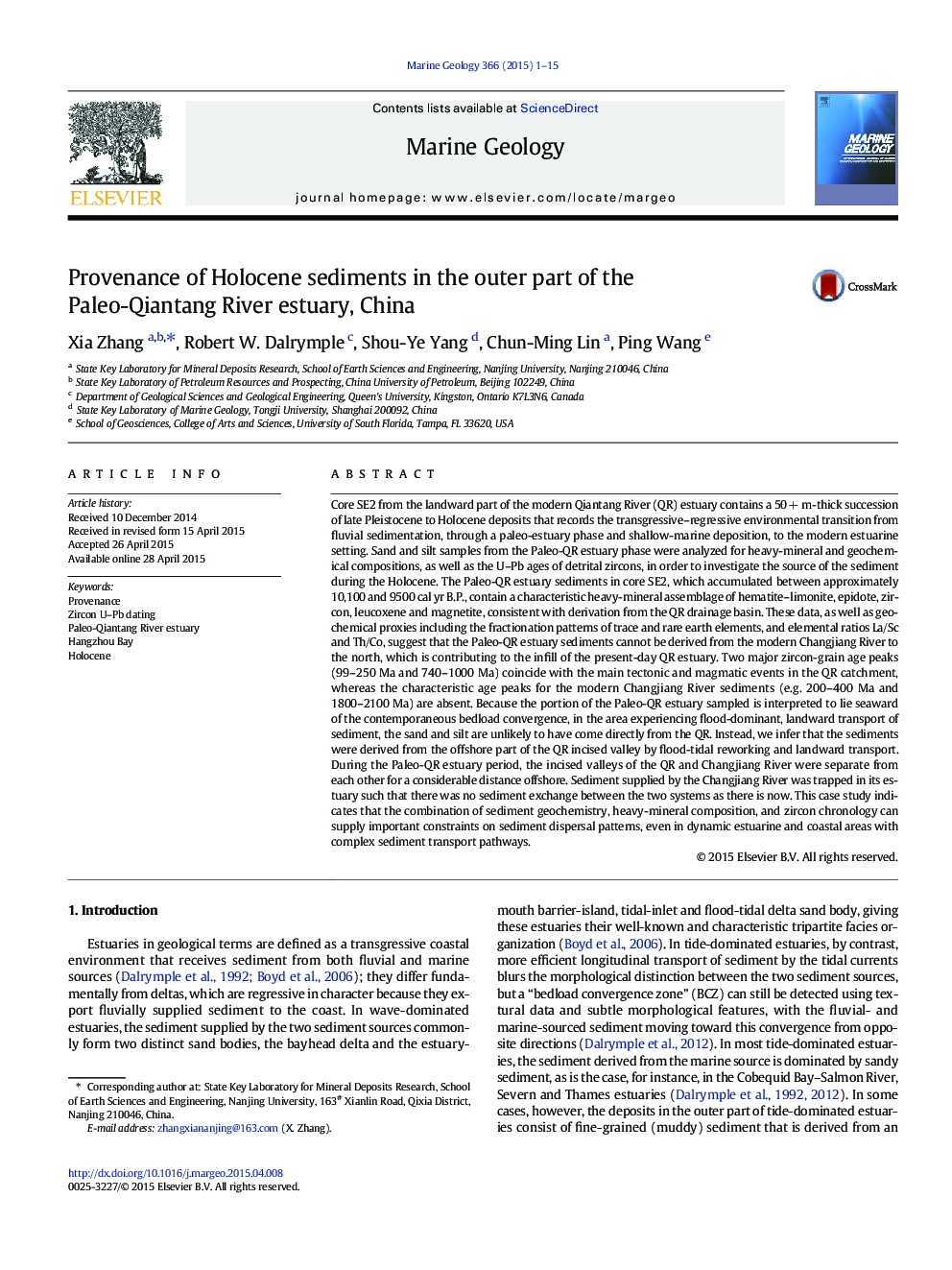| کد مقاله | کد نشریه | سال انتشار | مقاله انگلیسی | نسخه تمام متن |
|---|---|---|---|---|
| 4718161 | 1639086 | 2015 | 15 صفحه PDF | دانلود رایگان |

• Paleo-QR estuary sediments have distinct mineral and geochemical compositions from those of the Changjiang River deposits.
• Paleo-QR estuary sediments mainly came from QR, whereas the modern counterpart derived primarily from Changjiang River.
• Sedimentation in Hangzhou Bay is closely linked to that of the large delta-estuary system in the Changjiang River mouth.
Core SE2 from the landward part of the modern Qiantang River (QR) estuary contains a 50 + m-thick succession of late Pleistocene to Holocene deposits that records the transgressive–regressive environmental transition from fluvial sedimentation, through a paleo-estuary phase and shallow-marine deposition, to the modern estuarine setting. Sand and silt samples from the Paleo-QR estuary phase were analyzed for heavy-mineral and geochemical compositions, as well as the U–Pb ages of detrital zircons, in order to investigate the source of the sediment during the Holocene. The Paleo-QR estuary sediments in core SE2, which accumulated between approximately 10,100 and 9500 cal yr B.P., contain a characteristic heavy-mineral assemblage of hematite–limonite, epidote, zircon, leucoxene and magnetite, consistent with derivation from the QR drainage basin. These data, as well as geochemical proxies including the fractionation patterns of trace and rare earth elements, and elemental ratios La/Sc and Th/Co, suggest that the Paleo-QR estuary sediments cannot be derived from the modern Changjiang River to the north, which is contributing to the infill of the present-day QR estuary. Two major zircon-grain age peaks (99–250 Ma and 740–1000 Ma) coincide with the main tectonic and magmatic events in the QR catchment, whereas the characteristic age peaks for the modern Changjiang River sediments (e.g. 200–400 Ma and 1800–2100 Ma) are absent. Because the portion of the Paleo-QR estuary sampled is interpreted to lie seaward of the contemporaneous bedload convergence, in the area experiencing flood-dominant, landward transport of sediment, the sand and silt are unlikely to have come directly from the QR. Instead, we infer that the sediments were derived from the offshore part of the QR incised valley by flood-tidal reworking and landward transport. During the Paleo-QR estuary period, the incised valleys of the QR and Changjiang River were separate from each other for a considerable distance offshore. Sediment supplied by the Changjiang River was trapped in its estuary such that there was no sediment exchange between the two systems as there is now. This case study indicates that the combination of sediment geochemistry, heavy-mineral composition, and zircon chronology can supply important constraints on sediment dispersal patterns, even in dynamic estuarine and coastal areas with complex sediment transport pathways.
Journal: Marine Geology - Volume 366, 1 August 2015, Pages 1–15